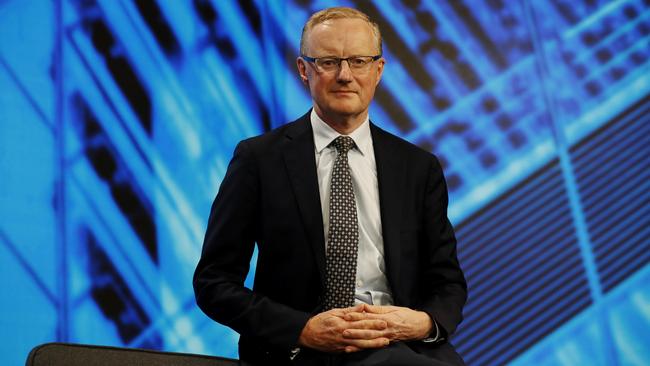
While in the top job, he’s not had to raise interest rates, and if current expectations play out, his term will expire before he gets a chance.
It’s a curious thing about central bankers. They muse and rehearse in their minds for the day they will get to pull the interest rate policy lever, unleashing a blunt instrument that hits every corner of the economy. RBA governors are cloaked in enormous power.
To be sure, since becoming governor in September 2016, Lowe has cut official interest rates to record lows and deployed alternative policy measures like yield curve control and quantitative easing for the first time, so his dissatisfaction is not that acute.
The central bank’s current mantra holds that official interest rates won’t be raised until 2024, too late for Lowe, whose term as governor ends in September 2023. In the interim, he will have helped lead the economy through its most challenging days. But always there will be a nagging question of what might have been.
Or will there? Lowe might yet get his chance.
A lot about the economic outlook changed last week on news the country’s unemployment rate plunged to 5.1 per cent in May from 5.5 per cent in April, with 115,000 new jobs created over the month. The jaw-dropping data showed the economy has moved at light speed from recession and recovery to a new and welcome phase of expansion. It also means the RBA’s 2024 horizon for an interest rate hike is looking shakier by the day.
While one month of employment data has to be viewed with caution, the May numbers are stunning in themselves as they followed the withdrawal of the federal government’s wage subsidy program in March. With JobKeeper gone, it was feared many thousands would suddenly be tossed back into unemployment. Instead, the end of the wage subsidy, a key plank in the push back against the Covid-19 pandemic, has been barely been felt.
Below all of this is a surging economy fed by record low interest rates and generous fiscal stimulus which was topped up in the government’s 2021 budget just a month ago.
Things are clearly running hot.
It’s now within the realm of possibility that by the end of 2021, the unemployment rate will be on approach to something like 4.5 per cent, a level that the RBA has itself held up as being consistent with tight job market conditions and the start of wage rises.
If it comes to pass, Lowe will find it very hard to continue talking up 2024 as a realistic time to increase the official cash rate from its current 0.1 per cent. The timeline will almost certainly need to be brought forward, perhaps dramatically.
Lowe has said he wants wages growing by around 3.5 per cent per year before he raises interest rates. Only then will inflation be sustainably within the central bank’s 2-3 per cent target. Wages are currently growing at 1.5 per cent per year. But while it feels like there is time, the rate at which the job market is tightening is truly remarkable, and policy recalibration will be required soon enough.
The closure of Australia’s international border during the pandemic is also a factor. It has dried up the inflow of skilled labour and population growth has stalled. There are no plans to reopen the border for another year given the ongoing risk of importing another wave of Covid-19 cases. It is already fanning wage hotspots.
Lowe flagged this as a potential risk in a speech this week.
“The main effect of the closure of the borders on the labour market is that we can no longer tap the overseas labour market for areas where workers are in short supply,” he said.
“If we are still in a position in a year’s time where we can’t get workers with skills that are in short supply, I think we will see upward pressure on wages and inflation,” Lowe told a farming conference in Queensland.
The broad sweep of Australia’s recent economic data and the sudden tightening of the job market make it increasingly likely that Lowe will finally get to know what it is like to raise interest rates.
He might suffer some embarrassment in interim, having capitulated on what has been a fairly dovish view on the outlook. But if it’s the case that the economy is at full employment as he packs his desk in 2023, he really won’t be bothered.
Dow Jones newswires








A career devoted to the understanding and implementation of monetary policy has left the governor of the Reserve Bank, Philip Lowe, unfulfilled.